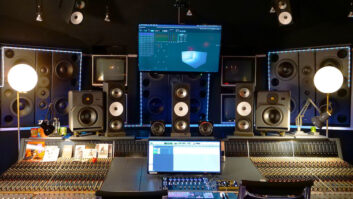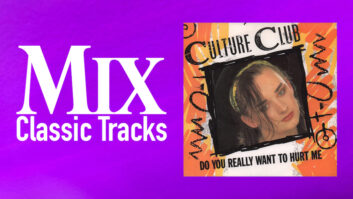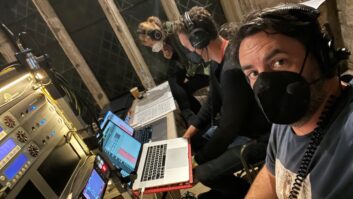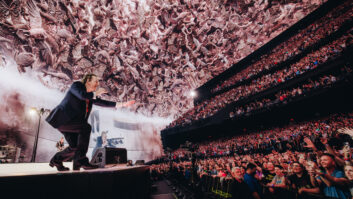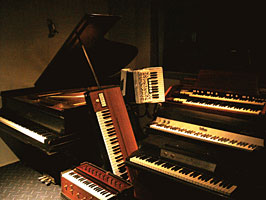
Livewire houses Gaboury’s 7-foot Steinway and multiple keyboards—a necessity for the musician/producer.
When is a project studio not a project studio? When the studio you’re talking about is Livewire Production & Recording (New York City, www.livewirenyc.com), the audio headquarters of Steve Gaboury.
The keyboardist for Cyndi Lauper, prolific arranger, producer and highly seasoned engineer, Gaboury may refer to his 1,600-square-foot facility in the deep south of Manhattan as a “project studio,” but for him and his clients, it’s actually an expansive artists-first womb for the incubation of world-class pop, jazz, soundtracks and beyond. “I really like to have the studio represent a place where the music and the musicians come first,” says the easygoing Gaboury. “I always want my engineers to take on the mindset of the musician: What’s going to inspire them and facilitate them coming up with the best music they possibly can? That’s versus what I see in other studios, where a producer will spend two-and-a-half hours putting up a mic, focusing on the technical aspects and burning the music out.”
Burnout seems next to impossible at Livewire, with its casually Zen atmosphere that reflects the lower-key Tribeca environs where it was established by Gaboury in 1995. A studio operator of some sort or another since his first East Village fling in 1981 (“My old space was kind of a loft bed that expanded into a studio,” he says.), the Grammy-nominated Gaboury won the right to own a real New York City recording home through persistence and an always-keen ear. The result is a skylight-kissed facility with a main live room, drum booth, two vocal booths and — most important to Gaboury — a control room with plenty of space for ideas and stretching out.
“Every studio that I had in the past, I ended up enlarging the control room three times!” he says with a laugh. “But so much of the work is in the control room that I designed Livewire around it. I’m a keyboard player, but before this I never had room to have my organ — my dream for this place was to have a full keyboard studio that could hold my 7-foot Steinway Grand, Hammond C3, Wurlitzer, Fender Rhodes, Clavinet…so that I and other keyboard players, composers and singer/songwriters could do their thing.”
Before the music — for a client roster that has included Gato Barbieri, Lauper, Medeski, Martin & Wood, Bobby Previte and Lenny White — hits the Digidesign Pro Tools HD3 system (with a 192 I/O interface), it usually passes through Livewire’s Trident Series 70 28×52×16 console. “The Series 70 is the little brother of the classic 80 board, but it has the same electronics and it’s a little smaller,” says Gaboury. “I love it because it’s kind of the workingman’s Neve: It’s warm, definitely not thin or transistory sounding; it’s got a lot of meat to it.
“I only have eight [stereo] outputs, so I’m mixing more and more in the box. One advantage of that is if I go out for three weeks with Cyndi, I can leave the mix here, and when I come back it’s right where I left off. But the other thing I’ve loved about working in Pro Tools is that when I go on the road and my chief engineer, Chris Agosto, is working here with a client, they can come in and do vocals, and I know I’ve left the mix for them exactly the way I want them to hear it.”
To Gaboury, one of the keys to his musicians-first philosophy comes via a headphone mix on the Furman HRM-16 headphone/audio remote mixer that offers maximum flexibility during tracking. “The Furman gives you eight individual outs and can send effects back,” notes Gaboury. “Before this system, I had so many problems over the years with monitoring — the most difficult part of the sessions was really straightening the headphone mixes. The HRM-16 just speeds the whole thing up because each musician custom-mixes exactly what they want to hear, and the engineer can focus that much more on the other 9 million things he has to think about.”
So a project studio Livewire isn’t. Instead, for Gaboury and the artists who seek him out, it’s something much bigger. “I love playing live and I love recording,” he says. “To me, recording is the opportunity to photograph music. If you’ve got the patience, you can get it as you dreamed and — with any luck — get it better.”


